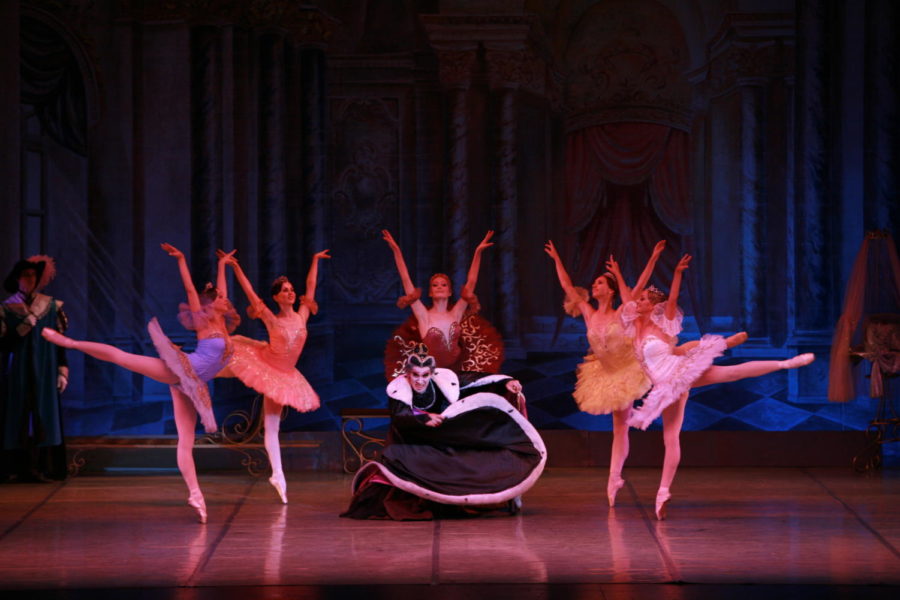Moscow Festival Ballet to return with “Sleeping Beauty”
January 21, 2016
The Moscow Festival Ballet’s “Sleeping Beauty” will return to Ames at 7:30 p.m. Friday at C.Y. Stephens Auditorium, with the familiar tale of a beautiful princess, cursed at birth and rescued by true love’s kiss.
Ticket prices for ISU students and youth tickets are available for $25 and $59. Adult tickets are available for $25, $35, $45, $50 and $59.
Tickets can be purchased in the Iowa State Center Ticket Office in the north entrance of Stephens Auditorium from 10 a.m. to 4 p.m. Monday through Friday; at all Ticketmaster centers; by phone: 1-800-745-3000 or online via Ticketmaster.
The show will continue the 2015-2016 Performing Arts series for Stephens and is the first of the new year. The last time the Moscow Festival Ballet brought “Sleeping Beauty” to Ames, in 1999, the company performed to a full house.
The Moscow Festival Ballet was created in 1989 by Sergei Radchenko to unite the great Bolshoi and Kirov Ballet companies in the highest level of classical ballet. Even 126 years after the first performance in Russia, “Sleeping Beauty” is still considered the finest achievement of classical ballet.
“This is classical Russian ballet, and everything is very precise,” said Peter Dake, company manager for the ballet’s American tour.
“The women are en pointe a lot. You will see the control, especially in the principle dancers, that the ballerinas have that is absolutely amazing. You wonder, how can they stay up there that long?”
For those like Dake who are wondering, there will be a short session before the performance that will offer insights into how the ballerinas manage to do such amazing things.
Beth Clarke, owner and artistic director of Beth Clarke Studio of Dance in Ames, will present a short preview and insights into “Sleeping Beauty” at 7 p.m. in the Celebrity Café area of Stephens Auditorium.
Clarke has presented previously before ballets performing at Stephens Auditorium.
“I enjoy educating audiences on the various aspects of dance,” Clarke said.
This time she will speak about the evolution of the pointe shoe, as well as on how a pointe shoe actually works.
“[My presentation] includes how the shoe provides the necessary support for the dancer to transfer her weight in two critical places, under the arch and around the toes,” Clarke said in an email discussing her presentation.
“I’ll also give some background information on the invention of the shoe; who wore it first, how it’s changed over the past hundred years and how the shape of a dancer’s foot influences the style of the pointe shoe.”
It is easy to forget how difficult ballet is when the dancers make it look effortless. In terms of technique, “Sleeping Beauty” puts the dancers to the test. Performing the role of Aurora is considered a rite of passage or initiation for ballerinas. In one piece, she remains en pointe, or on the tips of her toes, leg extended behind her, while her suitors spin her like a music box. This move is iconic to the ballet.
“It’s incredible what they do,” Dake said. “The men are very strong, some have aerial leaps that go very high. It’s all about technique, about being fluid and smooth throughout the movement, and yet conveying the story because they’re acting too.”
“Sleeping Beauty” is often recognized as classical ballet’s finest achievement. That reputation comes from the original choreographer, Marius Petipa, and composer Tchaikovsky. The ballet is often considered Petipa’s crowning glory, and the Moscow Festival Ballet honors Petipa by closely maintaining the original choreography. Those familiar with Tchaikovsky’s magnificent scores will find many similarities to both “The Nutcracker” and “Swan Lake.”
Treated as a coming-of-age story for the young princess and centered around the activities of her 16th birthday, the ballet features three Adagios for Aurora, celebrating her girlhood, falling in love and her marriage. The ballet is honored for its mime, pas d’action and divertissements, but there’s something to appeal to even the youngest viewer.
“Every little schoolgirl wants to be a ballerina,” Dake said. “This is something to bring that youngster to watch. They know the story of Sleeping Beauty. To see that in dance and be able to follow that in the ballet is incredible.
“If you look at the ballet, it’s just a pure art form. There’s something in there for everybody. It’s more than the ballerinas in their tutus and the men in their tights. It’s a cultural experience.”
For more information, visit the Iowa State Center website at www.center.iastate.edu.















